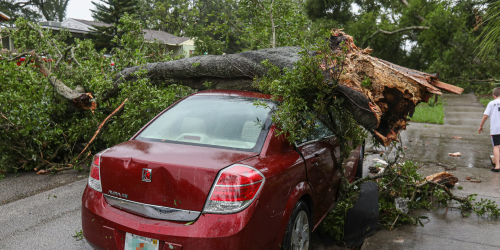The Need for Disaster Management Solutions in the 21st Century
Share

According to the United Nations, natural disasters have affected over 4 billion people and caused economic losses exceeding $2.9 trillion in the past two decades. The frequency and intensity of these disasters are rising, driven by factors such as climate change, urbanization, and population growth. In this context, the need for effective disaster management solutions has never been more critical.
The impact of climate change on natural disasters is profound. Rising global temperatures are linked to more extreme weather events, including hurricanes, droughts, and heavy rainfall. These events result in catastrophic consequences, such as loss of life, displacement, and economic instability. Effective disaster management strategies are essential to mitigate these risks and protect vulnerable communities.
Urbanization further increases the vulnerability to disasters. As cities become more densely populated, the construction of buildings and infrastructure in hazard-prone areas, such as floodplains and coastal zones, becomes more common. Disaster management solutions are crucial in planning and building resilient infrastructure that can withstand and recover quickly from disasters.
Population growth also contributes to the increased risk of disaster impact. With more people at risk, comprehensive disaster management plans are necessary to address the needs of larger populations. These plans should include evacuation procedures, emergency shelters, and healthcare services to ensure that communities can respond effectively to disasters.
Disaster management encompasses a variety of activities aimed at reducing the impact of disasters and enhancing recovery efforts. These solutions can be categorized into four main types:
Preparedness: Preparedness involves planning and preparing for potential disasters before they occur. This includes developing early warning systems, conducting disaster drills, and educating the public about disaster risks and safety measures. Effective preparedness ensures that communities are ready to respond quickly and efficiently when disasters strike. For example, Japan’s earthquake preparedness programs, which include regular drills and public education, have been instrumental in reducing casualties during earthquakes.
Mitigation: Mitigation strategies aim to reduce the severity of disasters by addressing their root causes. This includes implementing building codes that ensure structures can withstand natural hazards, creating green spaces to absorb floodwaters, and adopting sustainable land-use practices. For instance, the Netherlands’ extensive system of dikes and flood barriers is a prime example of mitigation efforts that protect against sea-level rise and flooding.
Response: The response phase involves immediate actions taken during and after a disaster to save lives and minimize damage. This includes deploying emergency services, providing medical care, and distributing essential supplies like food, water, and shelter. Rapid and coordinated response efforts are crucial in preventing further loss of life and alleviating human suffering. The international response to the 2010 Haiti earthquake, which included the deployment of search and rescue teams from around the world, highlights the importance of timely and effective disaster response.
Recovery: Recovery focuses on restoring affected communities to their pre-disaster conditions and improving resilience to future disasters. This involves rebuilding infrastructure, providing psychological support to survivors, and restoring economic activities. Long-term recovery efforts also include reviewing and updating disaster management plans to incorporate lessons learned. The reconstruction of New Orleans after Hurricane Katrina illustrates the complexities of recovery, including rebuilding homes, schools, and businesses while addressing the social and economic impacts of the disaster.
In addition to traditional strategies, parametric solutions offer a modern approach to managing climate risks. Parametric insurance provides quick payouts based on predefined triggers, like specific weather conditions, allowing for faster response and recovery. This approach helps communities bounce back swiftly from disasters and encourages sustainable practices, such as planting drought-resistant crops and investing in better irrigation systems.
As natural disasters escalate in the 21st century, the need for comprehensive disaster management solutions is increasingly evident. By investing in preparedness, mitigation, response, and recovery strategies, along with innovative parametric solutions, governments and communities can enhance resilience, protect lives, and safeguard livelihoods. Proactive disaster management will remain crucial in global efforts to secure our future.
